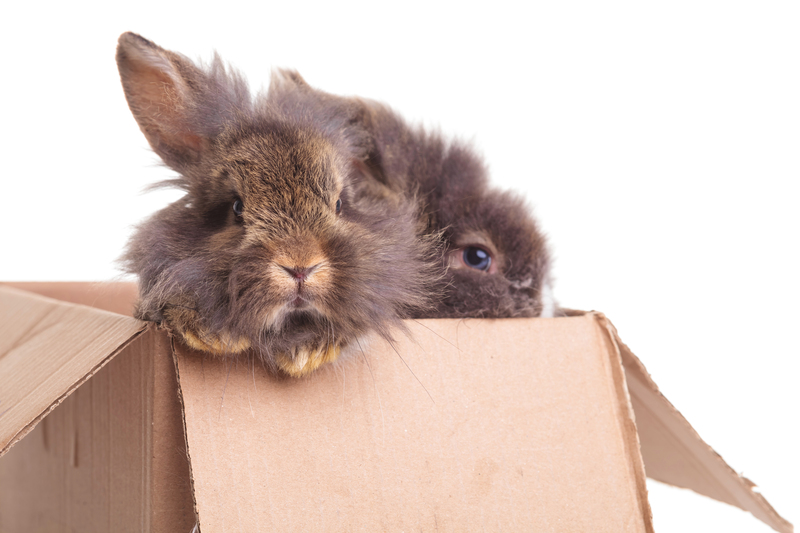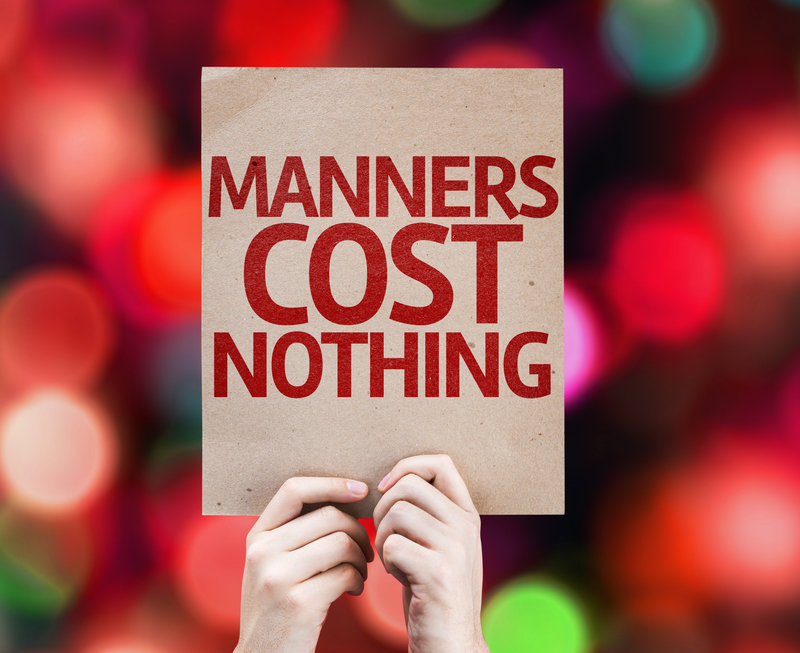Streamline Your Move with Expert Packing Tips
Posted on 18/05/2025
Streamline Your Move with Expert Packing Tips: A Step-by-Step Guide
Moving to a new home or office is an exciting adventure--a fresh start full of new opportunities. However, the process can quickly become overwhelming without efficient planning and smart packing techniques. With the right packing strategies, you can streamline your move, minimize stress, and ensure that your belongings arrive safely and securely. This comprehensive guide will provide you with expert packing tips to make your transition smoother, whether you're moving across the city or across the country.

Why Efficient Packing Matters for a Stress-Free Move
The key to a straightforward move is preparation, and that starts with organized packing. Streamlining your move with expert packing methods saves you time, money, and energy. Proper packing helps to:
- Prevent damage to your fragile and valuable items.
- Maximize the available space in your moving boxes.
- Reduce the number of trips and overall moving costs.
- Make unpacking and settling in much easier and faster.
Begin with a Clear Plan
Planning is crucial to streamline your move. Before boxing up your possessions, create a strategy. Here's how:
- Make an inventory list: List your belongings and categorize by room. This ensures you don't overlook anything essential.
- Establish a moving timeline: Set deadlines for decluttering, packing each room, and scheduling movers.
- Gather packing supplies in advance: Collect moving boxes, tape, bubble wrap, markers, and labels.
- Designate a packing space: Choose an area in your home where you can keep packed boxes to avoid clutter.
Decluttering: The Foundation of Efficient Packing
Before you start packing, it's time to declutter. Moving is the perfect opportunity to get rid of items you no longer need. Streamline your move by packing only what you truly want and need in your new space.
Steps to Successful Decluttering
- Sort by category: Start with clothing, then move to books, kitchenware, and miscellaneous items.
- Decide what to keep, donate, sell, or discard: If you haven't used something in over a year, consider letting it go.
- Organize donation pickups: Schedule charity organizations to collect items before moving day.
- Host a garage sale: Earn extra cash and lighten your load.
Less clutter means fewer boxes, faster packing, and a more streamlined move overall.
Packing Supplies: What You Really Need
Investing in the right packing materials will streamline your move and protect your valuables. Here's a comprehensive checklist:
- Sturdy boxes in various sizes: Small for heavy items (books), medium for general items, large for lighter, bulky belongings (bedding).
- Bubble wrap and packing paper: Cushion fragile items like dishes and electronics.
- Stretch wrap: Keep furniture drawers closed and protect upholstery.
- Packing peanuts or foam: Fill empty box spaces and protect breakables.
- Good quality packing tape: Prevents boxes from bursting open during transit.
- Permanent markers and labels: For clear, visible labeling.
- Ziplock bags: For screws, bolts, remote controls, and small hardware.
- Moving blankets: For furniture and large fragile items.
Pro Tip: Don't forget to save a few boxes for your essentials bag, which leads us to the next section.
Pack an Essentials Bag or Box
Nothing streamlines your move quite like having essentials easily accessible upon arrival. Prepare a clearly labeled box or suitcase containing:
- Toiletries (toothbrush, toothpaste, soap).
- A change of clothes and pajamas.
- Phone chargers and electronics.
- Important documents (IDs, passports, lease papers).
- Medications and basic first aid supplies.
- Snacks and bottled water.
- Essential kitchenware (coffee maker, mugs, utensils).
This simple practice will help you transition smoothly on your first night in your new home without scrambling to find important items.
Expert Packing Tips Room By Room
Below are specialized packing tips to streamline your move in every area of your home:
1. Kitchen
- Wrap plates vertically, like records, to help prevent breakage.
- Bundle utensils and flatware together using rubber bands and wrap in paper.
- Use dish towels and napkins as extra padding for fragile items.
- Seal open bottles and containers with plastic wrap under the lids to prevent spills.
- Mark boxes with "FRAGILE" and indicate which side is up.
2. Bedroom
- Keep clothes on hangers--use wardrobe boxes if possible or wrap groups of hung clothes in plastic bags.
- Pack out-of-season clothing first.
- Protect delicate accessories like jewelry by placing them in small containers or pill organizers.
- Vacuum-seal bulky bedding to save space.
3. Living Room
- Disassemble large furniture to fit through doorways and save loading space.
- Wrap electronics in their original packaging, if available, or use lots of cushioning.
- Tie and label cables and remote controls in separate bags taped to each device.
- Protect artwork and mirrors with bubble wrap and place in special mirror boxes.
4. Bathroom
- Seal shampoos and liquids in plastic bags to avoid leaks.
- Pack a separate bathroom essentials kit for immediate use.
- Keep towels handy for drying and as an extra layer of padding if needed.
5. Garage & Storage Area
- Dispose of hazardous materials that movers won't transport (paint, fertilizers, chemicals).
- Use small sturdy boxes for heavy tools.
- Bundle garden tools and wrap with blankets to protect walls and vehicle interiors.
Smart Labeling Techniques
Efficient labeling is vital to streamlining your move. It ensures that movers (and you!) know exactly where each box belongs, and what it contains. Try these pro labeling methods:
- Room-based color coding: Assign a different colored label or tape to each room.
- Number system: Number boxes and maintain a master inventory list for quick reference.
- Detailed description: Write the contents and indicate "FRAGILE" or "THIS SIDE UP".
- Quick access: Mark boxes that should be opened first for easier unpacking.
Streamlined Loading: Maximize Space and Security
How you load the moving truck is just as important as how you pack. Streamline your move with these expert loading strategies:
- Load the heaviest items and furniture first, spreading the weight evenly across the floor.
- Stack lighter, fragile boxes on top of heavier, sturdier ones.
- Fill empty spaces with soft items (pillows, blankets) to prevent shifting during transit.
- Secure large items with straps or ropes to minimize movement.
- Keep essentials and valuables with you rather than in the moving truck.
Unpacking: The Final Step Toward a Streamlined Move
Once you've reached your new residence, the unpacking phase begins. To keep this step as efficient as possible:
- Unpack room by room, starting with key areas like the kitchen and bedrooms.
- Set up beds and assemble furniture first for comfort.
- Use your color-coded labels or number system to place boxes in their corresponding rooms.
- Flatten and store moving boxes for future use or recycling.
Expert Bonus Packing Tips for Streamlining Your Next Move
- Enlist help from professional movers: Experienced movers offer packing services and handle items with utmost care.
- Take photos before disassembling electronics or furniture: It helps with correct reassembly at your new home.
- Keep a toolkit handy: For assembling beds and reattaching hardware upon arrival.
- Pack valuables and important documents separately: Keep them with you at all times during transit.
- Allow extra time: Rushing increases the likelihood of mistakes. Start early and stick to your timeline.

Frequently Asked Questions for Streamlining Moves with Efficient Packing
What is the best way to pack fragile items?
Use plenty of cushioning--bubble wrap, packing paper, or towels. Wrap each item individually and fill gaps with padding inside the boxes. Always use "Fragile" labels.
How far in advance should I begin packing?
Packing can take longer than expected. Start at least four to six weeks before your moving date, especially when you have a lot of items or need to declutter.
Should I hire professional packers or do it myself?
That depends on your budget and time constraints. Professional packers minimize stress and maximize safety for valuable items. If you do it yourself, follow expert tips and enlist friends or family for help.
Are there items professional movers won't pack?
Yes. Movers typically refuse hazardous or perishable items, such as flammable materials, explosives, chemicals, plants, and opened food.
Conclusion: Streamline Your Move with Expert Packing Tips Today
Moving doesn't have to be a stressful experience. By implementing these comprehensive expert packing tips, you can significantly streamline your move--protecting your possessions and making the transition to your new space seamless. From devising a clear plan and decluttering with purpose to packing efficiently and labeling intelligently, each step moves you closer to a successful, low-stress move.
Remember: Preparation is the ultimate moving hack. The more organized your approach, the smoother your move will be. Bookmark this guide for your next relocation and enjoy the excitement of settling into your new home or office!


